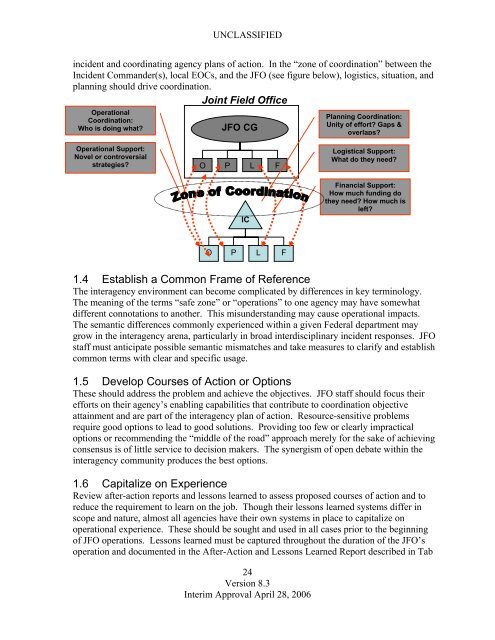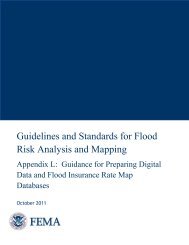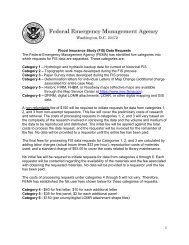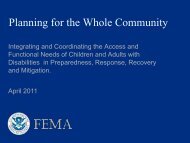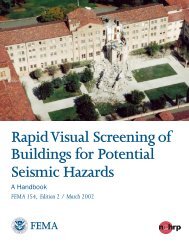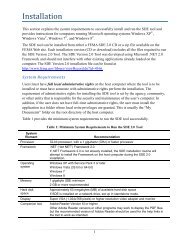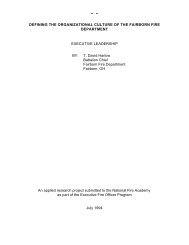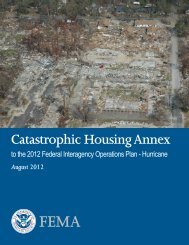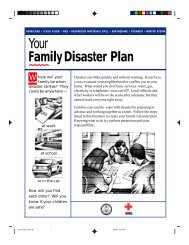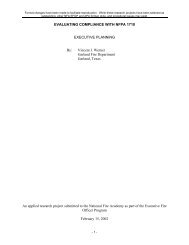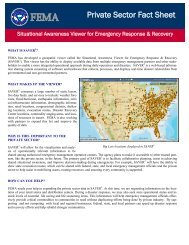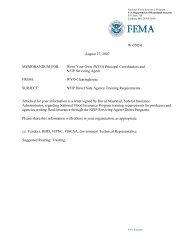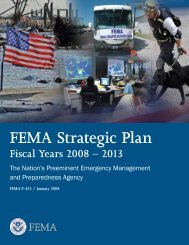Joint Field Office Activation and Operations - Federal Emergency ...
Joint Field Office Activation and Operations - Federal Emergency ...
Joint Field Office Activation and Operations - Federal Emergency ...
You also want an ePaper? Increase the reach of your titles
YUMPU automatically turns print PDFs into web optimized ePapers that Google loves.
UNCLASSIFIEDincident <strong>and</strong> coordinating agency plans of action. In the “zone of coordination” between theIncident Comm<strong>and</strong>er(s), local EOCs, <strong>and</strong> the JFO (see figure below), logistics, situation, <strong>and</strong>planning should drive coordination.<strong>Joint</strong> <strong>Field</strong> <strong>Office</strong>OperationalCoordination:Who is doing what?JFO CGPlanning Coordination:Unity of effort? Gaps &overlaps?Operational Support:Novel or controversialstrategies?OPLFLogistical Support:What do they need?ICFinancial Support:How much funding dothey need? How much isleft?OPLF1.4 Establish a Common Frame of ReferenceThe interagency environment can become complicated by differences in key terminology.The meaning of the terms “safe zone” or “operations” to one agency may have somewhatdifferent connotations to another. This misunderst<strong>and</strong>ing may cause operational impacts.The semantic differences commonly experienced within a given <strong>Federal</strong> department maygrow in the interagency arena, particularly in broad interdisciplinary incident responses. JFOstaff must anticipate possible semantic mismatches <strong>and</strong> take measures to clarify <strong>and</strong> establishcommon terms with clear <strong>and</strong> specific usage.1.5 Develop Courses of Action or OptionsThese should address the problem <strong>and</strong> achieve the objectives. JFO staff should focus theirefforts on their agency’s enabling capabilities that contribute to coordination objectiveattainment <strong>and</strong> are part of the interagency plan of action. Resource-sensitive problemsrequire good options to lead to good solutions. Providing too few or clearly impracticaloptions or recommending the “middle of the road” approach merely for the sake of achievingconsensus is of little service to decision makers. The synergism of open debate within theinteragency community produces the best options.1.6 Capitalize on ExperienceReview after-action reports <strong>and</strong> lessons learned to assess proposed courses of action <strong>and</strong> toreduce the requirement to learn on the job. Though their lessons learned systems differ inscope <strong>and</strong> nature, almost all agencies have their own systems in place to capitalize onoperational experience. These should be sought <strong>and</strong> used in all cases prior to the beginningof JFO operations. Lessons learned must be captured throughout the duration of the JFO’soperation <strong>and</strong> documented in the After-Action <strong>and</strong> Lessons Learned Report described in Tab24Version 8.3Interim Approval April 28, 2006


